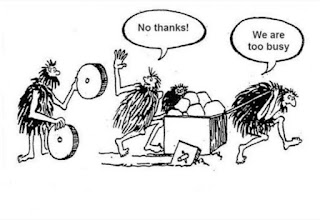Being "Intellectually Honest" is not only a key Agile behavior, it's just good human behavior, and we can only coach the willing. Coaches and Scrum Masters - if you are starting to feel yourself slipping into "selling" Agile to your team or organization, you're probably in the wrong organization. Organizations - if your Coach/Scrum Master presents you with the facts and data and you are not convinced or at least willing to give it an honest try, you are probably a 'laggard' on the Rogers Adoption Curve , and you probably are not ready for Agile. And as far as 'selling' Agile, keep in mind that you can't want more for someone than they want for themselves, and if they don't see the value or feel this is the 'flavor of the month' management fad, no amount of selling will change that. "Never attempt to teach a pig to sing; it wastes your time and annoys the pig" - Robert Heinlein
























